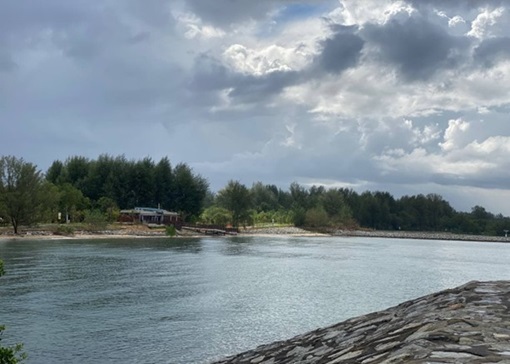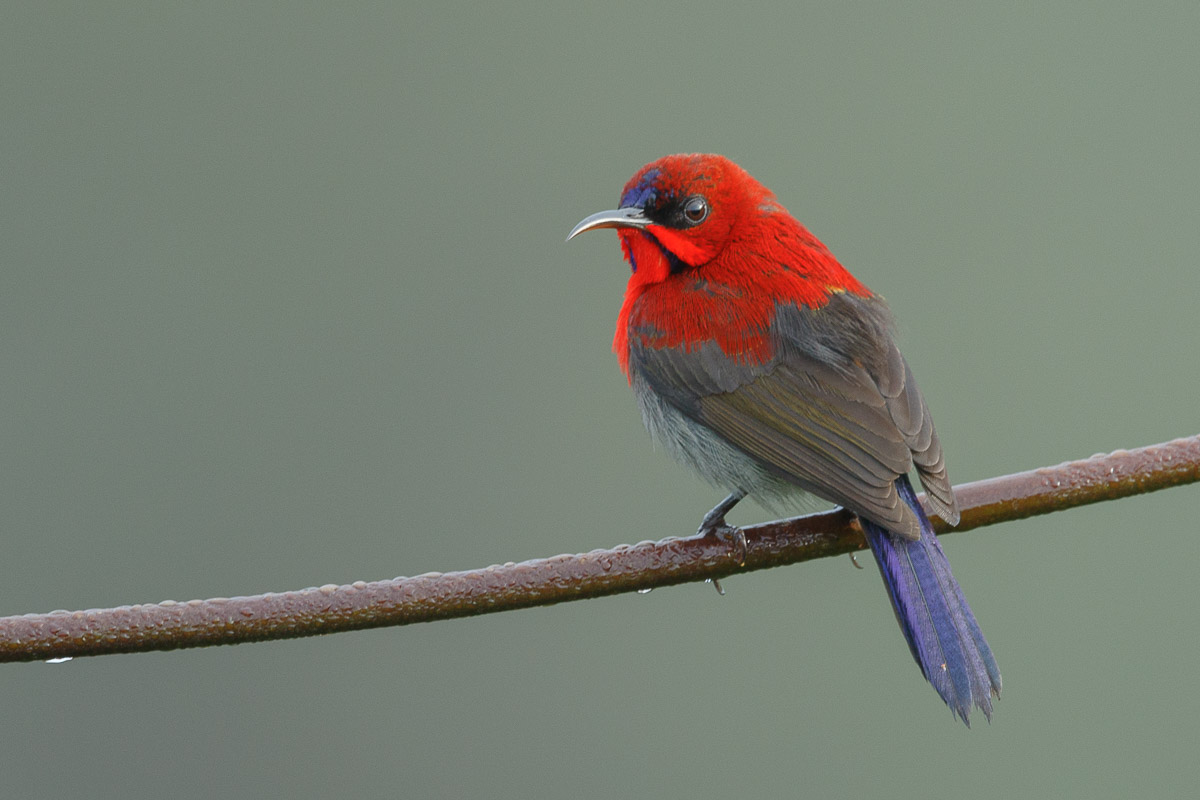A Walk to Remember

There are many few pit stops that you can explore and grab a bite at while out exploring the Round Island Route. (Photo credit: Arinna Nur Aqillah Bte Faizal)
The Round Island Route will be a whopping 150 km-long park connector that goes around Singapore. It will connect natural, cultural, historical and recreational sites together and will help link communities while also complementing the existing Park Connector Network. Enhancing our City in Nature experience for all residents, this route provides opportunities for recreational activities like cycling, skating, jogging and hiking, which makes it the ideal location to spend quality time with friends and family.
Phase One of the Round Island Route opened to the public in January 2022. It stretches across 75 km of eastern Singapore, including Changi Bay and East Coast Park, extending down to Marina Barrage, and onto Alexandra Canal.
You might have seen news about the route on social media. There have also been posts and videos about people exploring this new route, though the most notable ones are on
the Instagram-worthiness of Changi Bay that emulates the picturesque Jeju Island in South Korea.
Learn more about this Changi node with its many features and facilities:
Cyclist’s Paradise

On this bridge that connects Changi Bay to the Park Connector Network, cyclists can enjoy views of the sea during their ride. (Photo credit: Arinna Nur Aqillah Bte Faizal)
A set of new features along the Round Island Route is a pair of cycling bridges at Changi Bay. The concrete structures are reinforced with 140 m of slip-resistant glass fibre but maintain the area’s rustic look while ensuring the visitors’ and cyclists’ safety.
Mr Amus Khoo Woo Teck, 24, a logistics driver, chose Changi Bay to explore some new scenery on top of scouting for a new cycle spot in Singapore. Having recently picked up cycling, he shared that he what he most enjoyed about this section of the route was that the “straight road viewing the sea” is both a manageable ride for novices but it also has a view that is unparalleled.
He added that it was social media that had enticed him to visit Changi Bay. “They were advertising this area so I thought since today is my off day, maybe I should come down to get some fresh air,” said Mr Khoo, who lives in Sembawang.
Another cyclist, Mr Muhammad Syafiq Bin Nazri, 26, an air traffic controller-in-training, added that he decided to cycle along the route because he was feeling “bored and could not really travel overseas”. He also enjoyed how this trail connects him to other areas throughout the island.
Other than the cycle trail, something else that can be enjoyed as one dismounts from the bicycle would be the boardwalk and lookout pavilion at Changi Bay. Visitors can enjoy a closer look at the waterfront from the new boardwalk. Moreover, the pavilion offers visitors a sweeping view of the waterfront, so they can soak up the experience of hearing the sounds of crashing waves while being immersed in nature.

This boardwalk links to a semi-sheltered area where visitors can have a washroom break or use the vending machines to buy supplies. Visitors can use this chance to get some rest before continuing on the trail. (Photo credit: Kesley Young)
Taking the Scenic Route
As you make your way along the trail, there are many interesting plant species for you to look out for. One of which is the Sepetir, also known as Sindora wallichii, which is an endangered species. With the ability to grow up to 30 m with a massive crown, this plant is one of the very many you should definitely look out for when on route!

Native to Singapore, the wood from the Sepetir is used to make furniture and in construction. (Photo credit: Jessica Teo)
Mr Hon Chin Foang, 51, a pastor, avid jogger and cyclist, visited the new Changi Bay node after hearing about it from his daughter, and his response to the new route is very positive. He mentioned that he enjoyed the route as it covers the “coastline which connects Pasir Ris to Punggol”, showcasing many lesser-known scenic parts of the island.
Mr Christion Tan Kiat Jun, 26, shared that this route is perfect for him to “cycle long distances”. As a nature lover, the banker especially enjoys the diverse flora found along the route, which is “calming to the mind”.
Apart from the flora, if visitors are lucky, they may also get the opportunity to catch glimpses of the different fauna species living by the coastline. Not only do they add life to the trail, but they also play an important part in our environment and ecosystem.
One example would be the Smooth-coated Otter (Lutrogale perspicillata). These otters can usually be spotted in pairs or in small families in the mangroves, mudflats, and other coastal areas. The animal is active day and night and feeds mainly on fish.
Tiles of Marine Life
As you stroll further down the boardwalk and lookout pavilion at Changi Bay, also look out for marine tiles where the water meets the land. Concrete tiles are placed along the coast to provide habitats for marine life. The crevices, grooves and pits provide ideal niches for marine life, such as crabs, snails and starfish which provides microhabitats for biodiversity.
This trail lines the water’s edge, offering visitors a vista of the waterfront while enjoying the tranquillity of the surroundings.
Learning More
Find out more about the Round Island Route here. Please adhere to our Park Connector Network’s etiquette.
Visit NParksSG, our refreshed YouTube Channel that serves as a one-stop repository for some 300 video resources. It also provides you a platform for existing and future digital outreach including DIY gardening and related crafts, virtual tours of our green spaces, and livestream events.
For more information about the flora and fauna found in Singapore, please visit NParks Flora and Fauna Web.
If you like what you read, follow us on Facebook, Instagram and Telegram to get the latest updates.





Have views or comments on this article? Let us know via this form. If you would like to give us feedback on any other areas relating to our parks and gardens, please submit via https://www.nparks.gov.sg/feedback